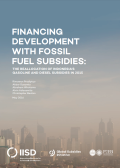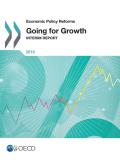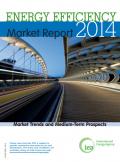
At the very end of December 2014, Indonesia introduced major reforms to its fossil fuel subsidies: removing subsidies to gasoline, except for distribution costs outside of the central islands of Java, Bali and Madura and introducing a “fixed” subsidy of IDR 1,000 per litre for diesel. At the same time, world oil prices plummeted. Together, these changes led to massive fiscal savings, equal to IDR 211 trillion (US$ 15.6 billion): over 10 per cent of state expenditure. This study investigates two central questions: Where were these savings reallocated? And is the new expenditure doing a better job for Indonesia’s development than subsidies? It concludes that fuel subsidy reform and reallocation in Indonesia have been a major step forward in improving public expenditure.

This white paper provides an analysis of the Intended Nationally Determined Contributions (INDCs) for 37 partner countries in the U.S. Government's Enhancing Capacity for Low Emission Development Strategies (EC-LEDS) program and other designated priority countries. The white paper includes an overview of global INDCs, country profiles for countries, regional trends, and sectoral trends. Moreover, each country profile includes information from the INDC on the:

The UNDP-UNEP Poverty Environment Initiative (PEI) offers a unique way of tackling these issues together by offering policy options to governments on how sustainable use of natural resources can help reduce poverty and maintain economic growth. With strong support from six donors globally, PEI in Asia Pacific is working with nine countries to mainstream pro-poor natural resource management into economic policies and decision making to achieve more inclusive green economies.

Going for Growth is the OECD’s regular report on structural reforms in policy areas that have been identified as priorities to boost incomes in OECD and selected non-OECD countries (Brazil, China, Colombia, India, Indonesia, Latvia, Russian Federation and South Africa). Policy priorities are updated every two years and presented in a full report, which includes individual country notes with detailed policy recommendations to address the priorities.The next full report will be published in 2017.
This interim report takes stock of the actions taken by governments over the past two years in the policy areas identified as priorities for growth. This stocktaking is supported by internationally comparable indicators that enable countries to assess their economic performance and structural policies in a wide range of areas.

This year’s report includes an in-depth look at energy efficiency developments in the transport sector and in finance. Huge new waves of demand for mobility are emerging in OECD non‑member economies, bringing with them the challenges of pollution and congestion already faced in OECD countries. Fuel-economy standards and other policies are expected to help shape the market for more energy-efficient vehicles in the years to come. In financial markets, energy efficiency is becoming an important segment in its own right, aided by a growing range of financial products. This report documents the growing scale and diversity of energy efficiency products and actors.
Finally, this report reviews national energy efficiency market developments in various jurisdictions around the world, including Canada, China, the European Union, India and Italy. These case studies provide snapshots of specific energy efficiency sub-markets, and insights into how these markets may evolve in the coming years.
